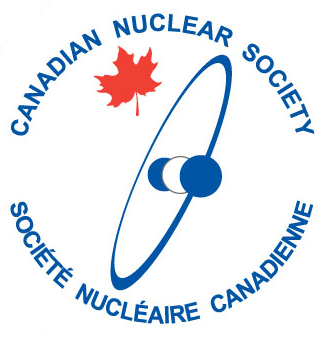How is the medical field reliant on the nuclear industry?
Useful Isotopes
![Single Photon Emission Computed Tomography (SPECT) [1]](https://www.cns-snc.ca/wp-content/uploads/2021/12/SPECT_CT-1024x765-1.jpg)
Nuclear medicine uses isotopes for both diagnostic procedures and therapeutic procedures. Nuclear science helps probe various parts of the human body and treat what’s going wrong. Medical professionals administer compounds with radioactive isotopes called radiopharmaceuticals for both diagnosis and therapy (with the diagnosis being far more common). Canada has been a world leader in making and using these procedures since the world started carefully administering radiation doses to medical patients.
Molybdenum-99/Technetium-99
Imaging is the most frequently used diagnosis technique with radiopharmaceuticals. 80% of all radioisotope procedures are using technetium-99. [2] This isotope can uncover many health problems including finding cancers without having to operate on people.
The form of technetium-99 that’s used decays very quickly, it has a half-life of roughly 6 hours. This means that every 6 hours half of the technetium-99 will decay, whether it’s been used or not. To get around this problem, the Canadian nuclear medicine supply chain has worked out a way to take Molybdenum-99 from nuclear reactors and ship it all over the world, and it becomes Technetium-99 spontaneously. For decades, Canada has run one of the five nuclear reactors in the world allowing 40 million diagnostic procedures every year for people everywhere. [3]
The chemical compounds that have this radioisotope move through the body after ingestion. The high-energy gamma rays coming from the radioactive decay show off organ structure and how well they function. Images created from technetium-99 allow for easy disease detection by looking for dark or abnormal spots. The short half-life means the compound can quickly leave the body with minimal side effects. [4]
Sadly, the nuclear reactor that produced so much of the world’s supply of Molybdenum-99 (that made the Technetium) had to be shut down. Canadian researchers are trying to find new ways to make this life-saving radiopharmaceutical.
Cobalt-60
Canadian medical physicists, Dr. Harold Johns and Dr. Sylvia Fedoruk became the first researcher team in the world to successfully treat a cancer patient using Cobalt-60 radiation therapy. [5] These Canadians showed the world in 1951 how powerful Cobalt-60s medical treatment was. With no naturally occurring Cobalt-60 on Earth, Canada has led production, with almost 50% of the world’s supply coming from Ontario’s nuclear reactors. [6]
As techniques advanced, cobalt-60 became imperative for sterilizing implants and medical equipment; sterilizing roughly 40% of all single-use medical devices. [7] This has been particularly important to help fight against COVID-19, as it’s being used to sterilize needed equipment. [6] Gamma Knife surgery is a recent advancement, allowing for the non-invasive treatment of brain disorders. Previously these had to be treated with a very difficult brain surgery with lasting side effects. Advances in this technique mean the results can be achieved with a procedure that is completed in a single day.
Cobalt-60 has also revolutionized the incoming food trade. In the past, disinfection was done with toxic substances that could leave a residue that people would ingest and increase shipping time (which meant more spoiled food). Gamma irradiation eliminates the quarantine time needed since disinfection is quick and non-invasive.
Gamma sterilization has been used to fight disease by killing virus-spreading insects using the ‘Sterile Insect Technique’. Recent studies have shown ways to reduce or eradicate mosquitos using this technology. To learn more about Cobalt-60s history visit: https://cobalt60.usask.ca/timeline.php
Lutetium-177
The radioisotope Lutetium-177 is a relatively new useful isotope in the medical field. This isotope can be put into drugs that bind to neuroendocrine tumours, destroying cancer and leaving healthy cells alone. Additionally, these isotopes are now the main treatment for prostate cancer. Bruce Power is currently expanding production into Lutetium-177, set to be online by 2022. [8] To learn more about the Bruce Power isotope expansion visit: https://www.brucepower.com/isotopes-and-medical-innovation/
The Knowing nuclear video below talks about how useful medical isotopes have become in the modern world:
Citations
- https://upload.wikimedia.org/wikipedia/commons/9/9c/SPECT_CT.JPG
- https://www.chemeurope.com/en/encyclopedia/Technetium-99m.html
- https://www.ans.org/news/article-2235/progress-being-made-toward-mo99-production-at-darlington/
- National Research Council (US) Committee on Medical Isotope Production Without Highly Enriched Uranium. Medical Isotope Production without Highly Enriched Uranium. Washington (DC): National Academies Press (US); 2009. 2, Molybdenum-99/Technetium-99m Production and Use. Available from: https://www.ncbi.nlm.nih.gov/books/NBK215133/
- https://www.radonc.utoronto.ca/harold-johns and https://canada150.usask.ca/discoveries-with-impact/building-on-a-legacy-of-nuclear-medicine-excellence.php
- https://www.opg.com/news-and-media/our-stories/story/pickering-nuclears-cobalt-60-set-to-help-in-fight-against-covid-19/
- https://www.brucepower.com/isotopes-and-medical-innovation/cobalt-60-isotopes/
- https://www.brucepower.com/isotopes-and-medical-innovation/
